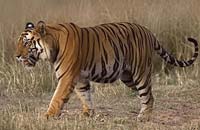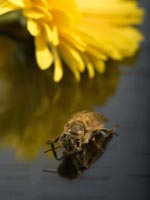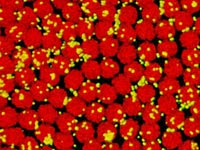![]() The spinal column that runs down your back is an identity badge that signifies your membership among the vertebrates – animals with backbones. Vertebrates have arguably the most complex bodies and genomes of any animal group and certainly, our lineage has come a long way from its last common ancestor.
The spinal column that runs down your back is an identity badge that signifies your membership among the vertebrates – animals with backbones. Vertebrates have arguably the most complex bodies and genomes of any animal group and certainly, our lineage has come a long way from its last common ancestor.
 The closest evolutionary cousins of the vertebrates are simple aquatic creatures such as the jawless lancelets and the sac-like, immobile sea squirts. How did these simple body plans diversify into the vast array of sophisticated forms wielded by today’s fish, amphibians, reptiles and mammals?
The closest evolutionary cousins of the vertebrates are simple aquatic creatures such as the jawless lancelets and the sac-like, immobile sea squirts. How did these simple body plans diversify into the vast array of sophisticated forms wielded by today’s fish, amphibians, reptiles and mammals?
Gene number
Many scientists have suggested that the answer lies in the number of our genes. At three different points, the vertebrate genome (its full suite of genes) experienced a massive jump in size as huge chunks of genes – possibly the entire lot – were duplicated. The first of these coincided with the origins of the group itself and the second happened alongside the rise of the first jawed fish, setting them and their descendants aside from more ancient jawless forms like the lampreys.
So far, there seems to be a tidy connection between gene number and complexity, but the third round of duplication is a bit of a stumbling block. It happened at some point during the evolution of the bony fishes and while this group proceeded to radiate into a multitude of different shapes, their basic body plan stayed essentially the same. No big jump in complexity there.
Indeed, as the full genome sequences of more and more species are revealed, it’s becoming clear that the basic genetic toolkit that controls the development of animal bodies is remarkably consistent across the kingdom. Even the genome of a sea anemone, one of the simplest and most ancient animals on Earth, is strikingly similar to that of vertebrates.
In this light, it’s looking increasingly unlikely that the advent of new genes can account for the large rise in vertebrate complexity. Now, Alysha Heimberg and colleagues from Dartmouth College have proposed a new theory, centred around tiny molecules called microRNAs.
Filed under: Animal evolution, Animal kingdom, Evolution, Genetics, Genomes, Junk DNA | Tagged: complexity, gene evolution, macroevolution, microRNAs, RNAs, science, vertebrates | 4 Comments »












